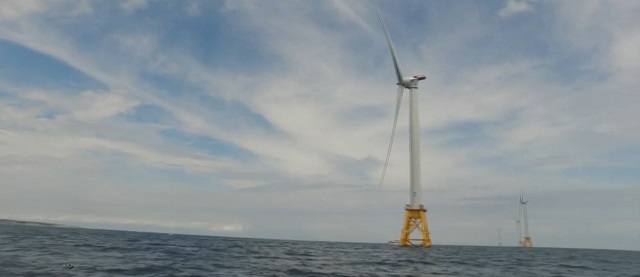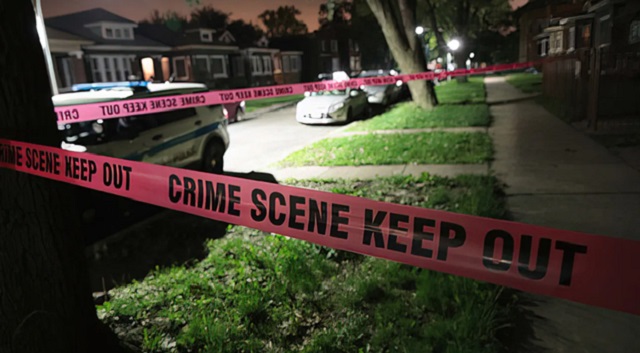Indigenous
B.C.’s plan to ‘reconcile’ by giving First Nations a veto on land use
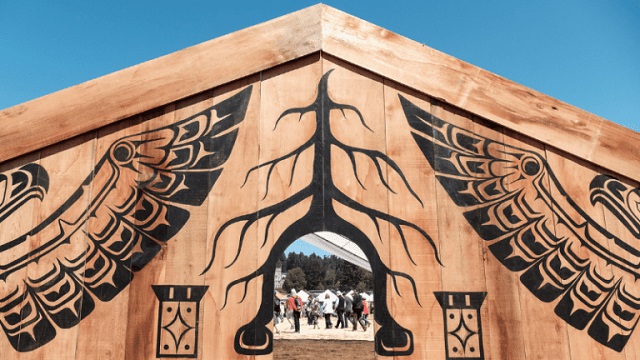
From the MacDonald Laurier Institute
By Bruce Pardy
UNDRIP-inspired land law reforms are poised to turn province into an untenable host for mining, forestry and much more.
We live in strange times. A new generation of political leaders seems determined to cripple their own societies. Prime Minister Justin Trudeau, of course, comes to mind. But in Canada, he is not alone. In British Columbia, NDP Premier David Eby is preparing to bring his province to its knees.
The B.C. government plans to share management of Crown land with First Nations. The scheme will apply not to limited sections of public land here and there, but across the province. The government quietly opened public consultations on the proposal last week. According to the scant materials, the government will amend the B.C. Land Act to incorporate agreements with Indigenous governing bodies.
These agreements will empower B.C.’s hundreds of First Nations to make joint decisions with the minister responsible for the Land Act, the main law under which the provincial government grants leases, licences, permits and rights-of-way over Crown land. That means that First Nations will have a veto over how most of B.C. is used. Joint management can be expected to apply to mining, hydro projects, farming, forestry, docks and communication towers, just to start. Activities at the heart of B.C.’s economy will be at risk.
In 2007, the United Nations General Assembly adopted the Declaration on the Rights of Indigenous Peoples (UNDRIP). UNDRIP states, among other things, that Indigenous people own the land and resources of the countries in which they live. They have “the right to the lands, territories and resources which they have traditionally owned, occupied or otherwise used or acquired … to own, use, develop and control.”
At the time, Canada sensibly voted “no,” along with the United States, Australia and New Zealand. Eleven countries abstained. In 2016, Trudeau’s government reversed Canada’s objection.
As a General Assembly declaration, UNDRIP is not binding in international law nor enforceable in domestic courts. But in 2019, under the leadership of Eby’s predecessor John Horgan, the B.C. legislature passed Bill 41, the Declaration on the Rights of Indigenous Peoples Act. The act requires the government of B.C. to “take all measures necessary to ensure the laws of British Columbia are consistent with the Declaration.” Eby’s joint management plan is the next step in this project.
Long before UNDRIP, the Supreme Court of Canada created a constitutional “duty to consult” with Aboriginal peoples. The court said that the “honour of the Crown” governs the relationship between the government and Aboriginal people. The Crown’s fiduciary duties include a duty to consult whenever proposed action may adversely affect established or asserted Aboriginal rights under Section 35 of the Constitution. This duty is notoriously uncertain, onerous and time-consuming. It has become an albatross around the neck of the Canadian resource industry. The courts seem unable to specify what the duty to consult requires, except after the fact.
Now, the B.C. government aims to make things even more unpredictable. Whatever the contours of the right to be consulted, the Supreme Court at least has been clear that it does not constitute a veto. Eby will create one.
Shortly before the B.C. legislature passed Bill 41 in November 2019, the Continuing Legal Education Society of British Columbia sponsored an Aboriginal Law Conference featuring several Indigenous proponents of the bill. They promised that the new law would render the province unrecognizable.
It will “set up a whole new norm,“ “give teeth to (UNDRIP),” and move the province away, if “not fully,” from the Westminster model of governance. The veto to be conferred on Indigenous interest groups, they said, will mean that “consent will not be given very often, if at all.”
“We’re not talking small changes; we’re talking big changes,” one speaker suggested, adding that money provided by the government so far hasn’t been enough.
“Compensation for sacred sites, for lands taken, for relocation … it’s going to be an overwhelming number of compensation claims … and so I’m hoping that the province is ready for that…. Life (in B.C.) can and will change.”
For many, it is likely to change for the worse. B.C. could become an untenable host for land-based, resource-related enterprise. Impenetrable layers of red tape would entangle applications for leases and licenses. The price for First Nations approvals could be an increasing share of royalties and kickbacks, without which consent will be refused. Both governments and First Nations will siphon an ever-larger piece of a shrinking pie.
The government’s timeline is short. Written submissions will be accepted until the end of March, and anyone giving feedback will be limited by how little information the B.C. government has offered in the consultation. Bureaucrats will begin drafting amendments to the Land Act in early February, and the government plans to introduce a bill in April or May.
If you are feeling grateful not to live in B.C., don’t count your chickens. In 2021, Parliament passed its own version of B.C.’s Bill 41, the federal United Nations Declaration on the Rights of Indigenous Peoples Act. It requires the federal government to “take all measures necessary to ensure that the laws of Canada are consistent with the Declaration.” An action plan outlining more than 100 specific measures was released in 2023.
In a speech to the B.C. Business Council in 2016, I argued that our leaders could not do a better job of preventing Canadian business from succeeding in the global economy. I underestimated them. Their determination and ingenuity know no bounds.
Bruce Pardy is executive director of Rights Probe, professor of law at Queen’s University, and senior fellow with the Macdonald-Laurier Institute.
Energy
Indigenous communities await Trans Mountain pipeline share
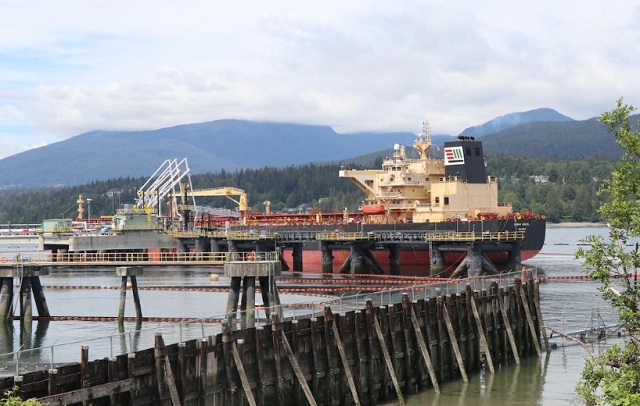
Tanker Dubai Angel at the Trans Mountain terminal, Burnaby
(Photo: Radio-Canada / Georgie Smyth / CBC)
From Resource Works
Ottawa’s Commitment to 30 percent Indigenous Stake in Trans Mountain Pipeline Still Awaiting Confirmation.
Indigenous leaders in Western Canada have been waiting for months for confirmation that the federal government will indeed enable Indigenous Peoples to get a 30 percent share in the Trans Mountain oil pipeline system.
That Ottawa has such a share in mind has been confirmed by Alberta Premier Danielle Smith. She says Ottawa is looking at possibly offering a loan guarantee to First Nations.
“They wanted to get the Indigenous partners to own 30 per cent. . . . It’s going to be a great source of income for the Indigenous partners.”
With the pipeline system’s capacity set to almost triple through the expansion project known as TMX, the federal government first announced in 2019, its intention to explore the possibility of the economic participation of 129 affected Indigenous Peoples.
Finance Minister Chrystia Freeland sent Indigenous leaders a letter last August outlining a plan to sell a stake in the pipeline system to eligible communities through a special-purpose vehicle. It said they would not have to risk any of their own money to participate.
But since then Indigenous groups have been awaiting further word from federal authorities on how and when the equity promise will be kept.
All Ottawa has said publicly is this on May 1: “The federal government will launch a divestment process in due course.”
Two key groups have aired proposals for acquiring equity in the oil pipeline:
- The Western Indigenous Pipeline Group was formed in 2018 “ to acquire a major stake in Trans Mountain for the benefit of Indigenous communities who live along the pipeline.” It’s been working behind the scenes, and, with Pembina Pipelines Corporation, developed in 2021 the Chinook Pathways operating partnership.
“Chinook Pathways is finance ready. There are no capital contributions required for Indigenous communities. We will structure the transaction so that participating communities will make zero financial contribution.”
- Project Reconciliation, also founded in 2018, proposed a ”framework” that would give ownership of the pipeline system to 129 Indigenous Peoples.
“We are poised to facilitate Indigenous ownership of up to 100 percent, fostering economic autonomy and environmental responsibility.”
And: “A portion of revenue generated (portion directed by each Indigenous community) will be used to establish the Indigenous Sovereign Wealth Fund, supporting investment in infrastructure, clean energy projects and renewable technologies.”
- A third group, the Alberta-based Iron Coalition, announced interest in TMX in 2019, but apparently dropped out in 2020.
In Alberta, the pipeline system spans the territories of Treaty 6, Treaty 8, and the Métis Nation of Alberta (Zone 4). In British Columbia, the system crosses numerous traditional territories and 15 First Nation reserves.
Commentator Joseph Quesnel writes: “According to Trans Mountain, there have been 73,000 points of contact with Indigenous communities throughout Alberta and British Columbia as the expansion was developed and constructed. . . .
“Beyond formal Indigenous engagement, the project proponent conducted numerous environmental and engineering field studies. These included studies drawing on deep Indigenous input, such as traditional ecological knowledge studies, traditional land use studies, and traditional marine land use studies.”
And Alberta’s Canadian Energy Centre reported: “In addition to $4.9 billion in contracts with Indigenous businesses during construction, the project leaves behind more than $650 million in benefit agreements and $1.2 billion in skills training with Indigenous communities.”
Not all First Nations have been happy with the expansion project.
In 2018, the federal appeal court ruled that Ottawa had failed to consider the concerns of several nations that challenged the project. In 2019, the project was re-approved by Ottawa, and again several nations (including the Squamish and Tsleil-Waututh) appealed. That appeal was dismissed in 2020. The nations then went to the Supreme Court of Canada, but it declined to hear the case.
Private company Kinder Morgan originally proposed the expansion project, but when it threatened to back out in 2018, the federal government stepped in and bought the existing pipeline, and the expansion project, for $4.5-billion. Ottawa said it was “a necessary and serious investment in the national interest.”
Ottawa at that time estimated that the total cost of the expansion project would come in around $7.4 billion. But cost overruns have since driven the final price to some $34 billion.
On the other hand, Ernst & Young found that between 2024 and 2043, the expanded Trans Mountain system will pay $3.7 billion in wages, generate $9.2 billion in GDP, and pay $2.8 billion in government taxes.
The TMX expansion twinned the 1953 Trans Mountain pipeline from near Edmonton to Burnaby (1,150 km) and increased the system’s capacity to 890,000 barrels a day from 300,000 barrels a day.
The original pipeline will carry refined products, synthetic crude oils, and light crude oils with the capability for heavy crude oils. The new pipeline will primarily carry heavier oils but can also transport lighter oils.
And the Alberta Energy Regulator says it expects oilsands production to grow by more than 17 per cent by 2033 (increasing to four million barrels a day from 3.4 million in 2023). And it expects global oil prices will continue to rise.
The TMX expansion finally opened and began to fill on May 1 this year.
And, as our CEO Stewart Muir noted, there was a quick reduction of eight cents a litre in gasoline prices for Vancouver due to completion of the project.
From Trans Mountain’s Westridge Marine Terminal at Burnaby, around three million barrels of oil have been shipped to China or India since the TMX expansion opened.
But because the port of Vancouver can handle only smaller Aframax tankers, more than half the oil has first been shipped to California, where it is then transferred to much larger VLCC (Very Large Crude Carrier) tankers. That makes for a longer but potentially cheaper journey.
At Westridge, because of limited tanker size, cargoes are limited to about 600,000 barrels per Aframax vessel. The largest VLCCs can carry two million barrels of oil. Westridge now can handle 34 Aframax tankers per month.
Some 20 tankers loaded oil there in June, a couple fewer than TMX had hoped for.
“This first month is just shy of the 350,000-400,000 bpd (barrels a day) we expected ahead of the startup,” said shipping analyst Matt Smith. “We are still in the discovery phase, with kinks being ironed out . . . but in the grand scheme of things, this has been a solid start.”
The Dubai Angel became the first Aframax tanker to load at Westridge. It took on 550,000 barrels of Alberta crude in the last week of May, and headed for the port of Zhoushan, China.
Now the Dubai Angel is headed to Burnaby for another load, and is expected to arrive there on July 8.
Frontier Centre for Public Policy
UNDRIP’s false promise of Indigenous Nationhood threatens individual Indigenous Canadians
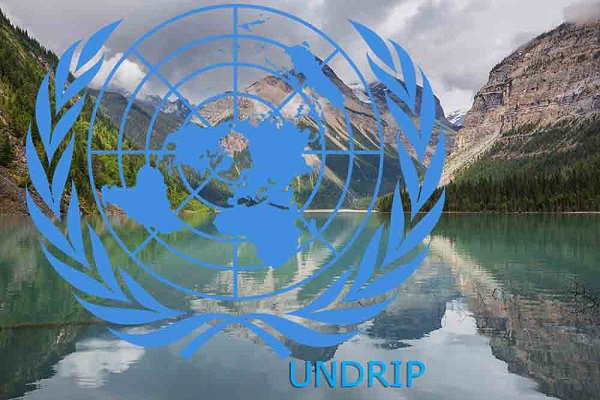
From the Frontier Centre for Public Policy
By Peter Best
All societies need to make use of force, both to preserve internal order and to protect themselves from external enemies. A liberal society does this by creating a powerful state, but then constraining that power under a rule of law. The state’s power is based on a social contract between autonomous individuals who agree to give up their rights to do as they please in return for the state’s protection. It is legitimated both by the common acceptance of the law, and, if it is a liberal democracy, through popular elections. Liberal rights are meaningless if they cannot be enforced by a state, which, by Max Weber’s famous definition, is a legitimate monopoly of force over a defined territory…Ultimate power, in other words, continues to be the province of national states, which means that control of this power at this level remains critical.
-Francis Fukuyama – Liberalism and its Discontents
Our Canadian elites, led by Justin Trudeau’s Liberal government, continue to advance the idea that Canada should be a race-based nation. This is reflected in the Trudeau government’s enactment of the racist United Nations Declaration on the Rights of Indigenous People (UNDRIP) laws and policies. (The UNDRIP Action Plan.)
These laws and policies are partly based on the premise that Indigenous peoples in Canada still have distinct cultures that give them the right to exist as separate groups within the Canadian nation, living parallel to the rest of Canadians, and only optionally being subject to the laws of Canada.
Under the heading “Cultural, religious and linguistic rights,” the UNDRIP Action Plan sets out the Trudeau government’s goal of creating a country where:
Indigenous peoples fully enjoy and exercise their distinct rights to maintain, control, develop, protect, and transmit their cultural heritage, indigenous knowledge, languages, food systems, sciences, and technologies, without discrimination…. Indigenous peoples are thriving, including through connection to culture and community, the use of their languages and the expression of their spiritual heritage.
Also, the UNDRIP Action Plan prescribes that these “distinct rights” are to be exercised and enhanced by treating “Indigenous peoples” as independent, self governing, “nations,” representing over 630 race-based nations existing within the boundaries of Canada.
The premise underlying the UNDRIP Action Plan is that authentic, pre-contact Indigenous cultures still exist, and that they have the right to be preserved at the expense of Canadian taxpayers. In other words, these nations will be dependent on other Canadians.
The last vestiges of authentic, distinct, pre-contact Indigenous cultures disappeared about 150 years ago. As Assembly of First Nations co-founder William Wuttunee wrote in 1971 in his book Ruffled Feathers: “Real Indian culture is just about dead on the reserves.” Now, over 50 years later, native traditional cultures have been replaced by re-imagined cultures, even if a declining few Indigenous people still speak their traditional languages.
There can be no going back to any part of Indigenous pre-contact cultures, nor would Indigenous peoples want to. In this respect, Iroquois writer Sachem Ely S. Parker says:
Do you know or can you believe that sometimes the idea obtrudes…whether it has been well that I have sought civilization with its bothersome concomitants and whether it would not be better even now…to return to the darkness and most sacred wilds (if any such can be found) of our country and there to vegetate and expire silently, happily and forgotten as do the birds of the air and the beasts of the field. The thought is a happy one but perhaps impracticable.
When trade with Europeans began in the early 1600’s, Indigenous peoples began the long, irreversible process of appropriating European goods and technologies, modern economic practices, Christianity, and Western norms and values, with the consequence that, by the late 19th century, their paleolithic, pre-contact cultures had become almost extinct.
All that remained was what William Wuttunee described as “touristy” and “museum pieces of buckskin and feathers,” the ceremonial remnants justly celebrated on special occasions but, less innocently, now used by their current leaders as symbolism in their endless political campaigns for more money and power.
Indigenous peoples cannot turn back from the modern, high-tech, globalist culture that is systematically enveloping all Canadians. In this respect, Yuval Noah Harari wrote in Sapiens:
Today almost all humans share the same geopolitical system (the entire planet is divided into internationally recognized states); the same economic system (capitalist market forces shape even the remotest corners of the globe); the same legal system (human rights and international law are valid everywhere, at least theoretically); and the same scientific system (experts in Iran, Israel, Australia, and Argentina have exactly the same views about the structure of atoms or the treatment of tuberculosis…. We still talk a lot about “authentic” cultures, but if by “authentic” we mean something that developed independently, and that consists of ancient local traditions free of external influences, then there are no authentic cultures left on earth. Over the last few centuries, all cultures were changed almost beyond recognition by a flood of global influences.
But ironically, the rise of globalism has counterintuitively led to the increase of parochial, tribalist feelings.
Historian Robert Kaplan, in his latest book The Loom of Time – Between Empire and Anarchy, From the Mediterranean to China, argues that the cultural shock caused by modernism and globalism–by their annihilation of traditional tribal life–has resulted in an emotionally compensating reaction on the part of those affected to “reinvent their primordial selves in more abstract and extreme forms in order to cope with impersonal settings,” and, in addition, to achieve worldly gains.
Kaplan explains that the anonymity and the loss of pride and identity on the part of tribal societies resulting from urbanization and other globalist influences led to the psychological need for a compensating, “emotional grounding,” which now manifests itself in intense, albeit fictional, assertions of political, ethnic, religious, and racial exceptionalism, and opportunistic demands for favored treatment by the state.
Ironically, the more modern, urban, and globally integrated the former pre-contact tribe becomes, the greater its “primordial” racial sentiments become and the greater and more inherently baseless are its ethnic or race-based claims to be favored by the state.
Pre-contact tribal cultures were relatively static and fatalistic. There was little belief in “progress,” human rights, money, wealth, or job creation. There was no belief that people had a right to material things like housing, education, medical care, constitutions, courts, judges, welfare, policing, or clean water. These are all modern Western ideas and practices that were inconceivable to pre-contact tribal cultures.
Kaplan writes:
Cultural consciousness is enhanced rather than submerged by modernization, because of the ability of modern states and societies to offer jobs, status, and other spoils for which individuals of different ethnic, religious and sectarian identities compete. Through education, modernization also makes people more aware of their collective pasts and their differences with other peoples. Such phenomena have been the forerunners to the identity politics of the post-modern era.
This is what has happened to Canadian Indigenous tribes.
Modernity, urbanization, and globalism, as William Wuttunee confirmed, have destroyed their pre-contact cultures and, as an ironic consequence, have led to abstract and entirely fantasy-based claims of present Indigenous cultural authenticity and “difference.” The more obvious it is that authentic pre-contact Indigenous cultures have vanished, the more their current Indigenous leaders opportunistically claim that they are alive and thriving.
The unprecedented, radical Indigenous political and legal demands now being routinely made by Indigenous groups are, in ironic fact, completely rooted in Western political ideas and practices.
Their demands for quasi- separatist “nation-to-nation” status, for veto powers over federal and provincial laws possibly affecting their “aboriginal rights and territories,” for reparations, for ownership stakes in resource projects and for co-management with the Crown of public lands and natural resources, are all demands that would be inconceivable to pre-contact Indigenous tribal cultures.
The Western philosophical nature of these demands is proof positive of the extinguishment of pre-contact Indigenous cultures.
Canadian Indigenous groups cannot form viable nation-states, and the UNDRIP Action Plan’s attempts to do this impossible task threatens the civic well being of individual Indigenous Canadians.
In referring to the endless squabbling between the various ethnic tribes that make up the many failed states of the Middle East and Africa, Kaplan reminds us that legitimate nation-states are more than artificial communities created by politics, as were the First Nations reserves in Canada. Rather, they are natural, “practical communities…entities of geographic and historical association.”
Kaplan also says that legitimate nation-states have hierarchical, coherent governing structures, and rules-based laws developed organically over time. They are supported by “organized bureaucratic systems interacting with each other on an impersonal, secular basis.”
None of these basic requirements of nationhood are present to any sufficient degree on First Nations reserves, which, as organized groups, are mostly strangers to the civic values, practices, and traditions of modern liberal democracies.
First Nations reserves, like the “institutionally flimsy” Arab and African tribal groups referred to by Kaplan, “have imported the fruits of science without as societies ever producing them themselves… They have experienced the West only as “things.” … They have possessed the techniques of Europe without intuiting the centuries-long cultural processes that had made the West what it was…”.
In other words, Indigenous tribal groups are “modern” only in the culturally appropriated material sense, and because of the Indian Act and the reserve system, they tend to be illiberal in their political culture and governing practices. The proposed Indigenous nation-states that are envisioned by the UNDRIP Action Plan will be, in Kaplan’s words, just as institutionally-flimsy as other failed states are.
This reality is at the core of the threat posed by the UNDRIP Action Plan to the civic well-being of individual Indigenous Canadians. In this regard Kaplan reminds us that: “…where institutions are weak then personalities…who milk and misgovern…perforce dominate.”
On Canadian Indigenous reserves, governance is prone to family-based self-dealing. (Kaplan’s phrase is “republics of cousins.”) There is no reason to believe that such governments will be better under the UNDRIP Action Plan. In fact, governance will probably get worse because, as Kaplan shows, tribalism and illiberalism are worsened when politically unprepared people achieve self-rule.
Indigenous lawyer and businessman, Calvin Helin, in his seminal book Dances With Dependency: Out of Poverty Through Self- Reliance, compares illiberal First Nations reserve governance to “banana republics.” He referred to Chiefs and Band Councils as “colonizers of their own disempowered people.”
Indigenous scholar Rob Louis adds:
What realistic chance do band members have against chief and council who control their money and resources? For many band members in Canada, the battle is not just with the Crown, it is also with their own leadership… Perhaps reconciliation within Indigenous communities needs to take place before reconciliation can happen with Canada.
Until recently, vulnerable, and powerless Indigenous Canadians had the federal and provincial governments, the courts, and human rights commissions to protect them. But that is no longer true. All these state institutions have shamefully abandoned their role of protectors of weak and vulnerable Indigenous Canadians.
The Supreme Court of Canada is just as much of a threat to the civic well-being of Indigenous Canadians as is the UNDRIP Action Plan.
In its Vuntut Gwitchin decision, purportedly to preserve Indigenous “difference,” the Court ruled that in the event of an irreconcilable conflict, a First Nations Band’s “collective rights,” resting on its right to protect “Indigenous difference,” will now prevail over an individual Indigenous Canadian’s rights as guaranteed by the Canadian Charter of Rights and Freedoms. As such, the Charter can now be effectively ignored by Band Councils, depriving countless Indigenous Canadians of Charter protection on their home reserves and territories.
The Vuntut Gwitchin First Nation (VGFN) is described by the Supreme Court as a “self-governing nation” in the Yukon comprising of about 560 “citizens,” only about 260 of whom live in the “main community” of Old Crow, which is the so-called “seat of government.” The other 300 odd “citizens” live mostly in Whitehorse, 800 kilometres south. There are no roads into Old Crow. Students cannot graduate from high school in that community, and there no adequate medical facilities in Old Crow.
Cindy Dickson, a VGFN citizen living in Whitehorse, claimed that a VGFN law that said that a “citizen” had to live in Old Crow to qualify to run for VGFN Council violated her Canadian Charter rights not to be discriminated against based on her residency.
She lost her case.
The Supreme Court asserted the existence of “Indigenous legal orders” that prevailed over Canadian law. There was an anti-discrimination provision in the 1993 VGFN Constitution. The Court told her to rely on that and “pursue a similar claim under the VGFN Constitution.”
The problem with this is that there is no VGFN court and no VGFN judge or lawyers. In fact, there is no VGFN institutional justice system whatsoever through which Cindy Dickson could pursue her claim. How could there be? VGFN, like most First Nations, is a mere tribal village, with a population so tiny that the creation of any such state institutions is impossible.
The Supreme Court knew this, and, to its discredit, preferred giving Ms. Dickson empty words over telling her the harsh truth that while she may have rights in the abstract, in VGFN because of its lack of institutions, she could not pursue those rights. A right without institutional support is, in fact, no right at all.
Another harsh truth that the Court avoided telling Ms. Dickson is that now, VGFN, like all Canadian First Nations, have been shamefully declared Charter-free zones by the Supreme Court of Canada. The Vuntut Gwitchin decision, along with the UNDRIP Action Plan, means that victims of corrupt or discriminatory First Nations reserve leadership practices will now have no one to turn to for protection and relief.
In fact, the Vuntut Gwitchin decision illustrates the absurdity of the Indigenous nation-state pretensions of the Canadian UNDRIP Action Plan.
The joint efforts of the Supreme Court and the federal government’s UNDRIP Action Plan have made individual Indigenous Canadians, in terms of having the guaranteed protection of the rule of law, effectively unprotected on their new, UNDRIP “nation-state” reserves.
Robert Kaplan writes a great deal about the multi-ethnic, multi-racial empires, the most generic form of governance in world history, where the strong hand of the emperor kept order and protected vulnerable minorities from the depredations of majorities. He cites the example of the Ottoman empire, where, with its breakup, the strong power of the sovereign in those territories was lost. Power was then transferred to tribalistic ethnic and religious groups that have little regard for the rights of minorities. This has resulted in over a century of anarchic tribal, ethnic and religious persecution and warfare in the Middle East.
Since Confederation, Canada has protected powerless and vulnerable Indigenous people from the mainly illiberal governance systems that are typical of First Nations reserves. Now, the Canadian state is abandoning this protective role. By doing so Canada is betraying the vast majority of powerless and vulnerable Indigenous Canadians, leaving them defenceless against the power and potential injustice of their tribal leaders.
What has happened echoes Frances Fukuyama’s warning that rights are meaningless unless they are created and can be enforced by a powerful state. The UNDRIP Action Plan and the Supreme Court’s rulings like Vuntut Gwitchin will not create viable and strong Indigenous nation-states. All they will do is weaken the Canadian state, causing harm to all Canadians and depriving the vast majority of vulnerable, powerless Indigenous Canadians of the protective rule of Canadian law.
Peter Best is a retired Sudbury lawyer. He is the author of There Is No Difference – An Argument for the Abolition of the Indian Reserve System and Special Race-based Laws and Entitlements for Canada’s Indians.
-

 Brownstone Institute1 day ago
Brownstone Institute1 day agoThe Media Refuses to Accept Covid Reality
-
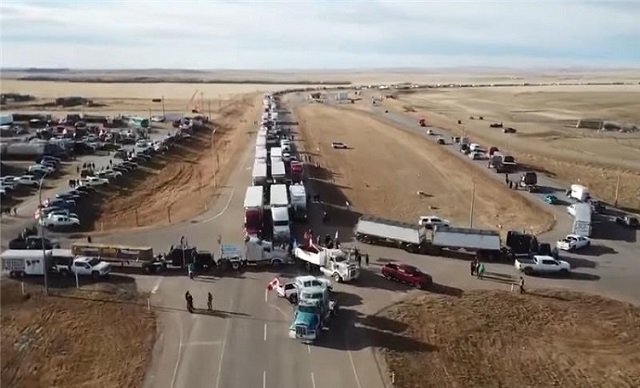
 Alberta1 day ago
Alberta1 day ago‘Fireworks’ As Defence Opens Case In Coutts Two Trial
-
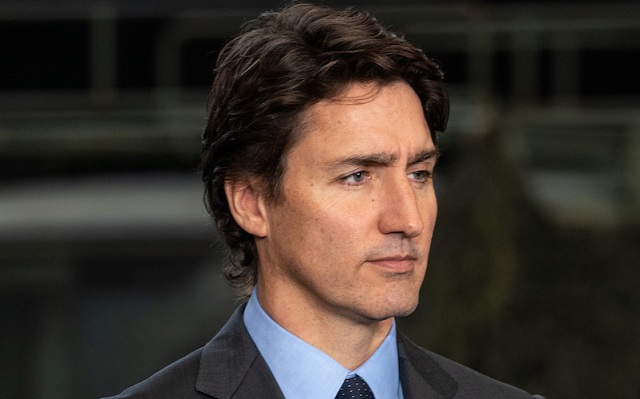
 National1 day ago
National1 day agoLiberals offer no response as Conservative MP calls Trudeau a ‘liar’ for an hour straight
-

 COVID-191 day ago
COVID-191 day agoLeaked documents: German gov’t lied about shots preventing COVID, knew lockdowns did more harm than good
-

 illegal immigration2 days ago
illegal immigration2 days agoKamala Harris, Immigration Extremist
-

 Frontier Centre for Public Policy2 days ago
Frontier Centre for Public Policy2 days agoCowering before carbon
-

 Business1 day ago
Business1 day agoFederal government seems committed to killing investment in Canada
-

 International1 day ago
International1 day agoSwitzerland’s new portable suicide ‘pod’ set to claim its first life ‘soon’



